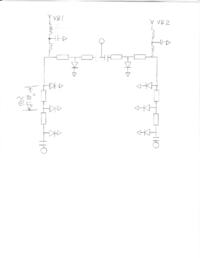jaehlee99
Junior Member level 1

- Joined
- Oct 9, 2012
- Messages
- 19
- Helped
- 0
- Reputation
- 0
- Reaction score
- 0
- Trophy points
- 1,281
- Activity points
- 1,401
Hello everyone..
I would like to design the SPDT which is used for Tx and Rx switching at the X band.
The isolation would be more than 70dB, would you recommend the the topolgy, such as series or shunt or series and shunt combination ?
It is also difficult to find the component at the X band frequency.
Thanks in advance
I would like to design the SPDT which is used for Tx and Rx switching at the X band.
The isolation would be more than 70dB, would you recommend the the topolgy, such as series or shunt or series and shunt combination ?
It is also difficult to find the component at the X band frequency.
Thanks in advance
Last edited:


